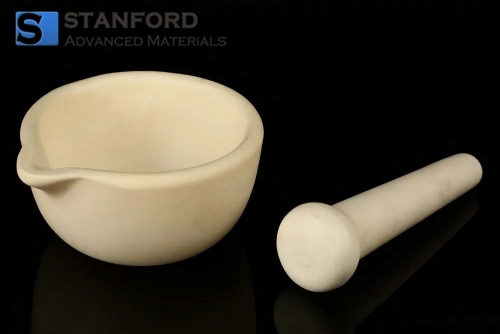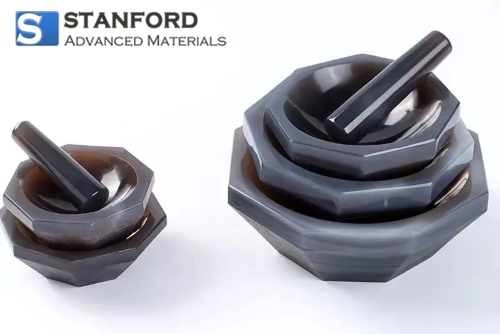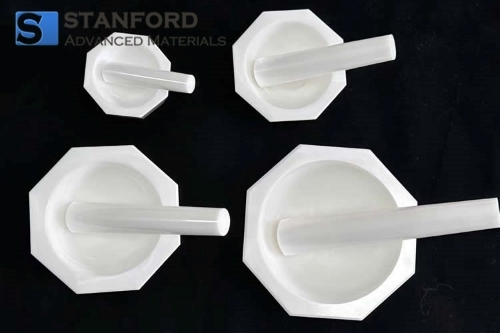Mortars And Pestles For Laboratory Use: Essential Tools For Grinding And Mixing
Introduction
Mortars and pestles have been in use in scientific research for thousands of years. They function as essential instruments for crushing, mixing and preparing samples in various disciplines. This article details the most frequently applied types, specifically those constructed from agate, aluminium oxide, zirconium dioxide, tungsten carbide and stainless steel, and describes the appropriate maintenance procedures.
Development of Mortars and Pestles
Mortars and pestles have been employed for thousands of years, with the earliest examples originating in ancient civilisations. Initially, these instruments were fabricated from simple materials such as stone, wood and ceramics. They were primarily used for grinding herbs, grains and medicinal substances. During the Renaissance and the Enlightenment, the advancement of scientific research led to their routine use in alchemy and early chemistry.
Today, laboratories utilise high-performance materials such as agate, aluminium oxide, zirconium dioxide, tungsten carbide and stainless steel. These modern materials enable scientists to grind harder substances with increased precision and reduced contamination, thereby preserving sample integrity.

Use of Mortars and Pestles in the Laboratory
Mortars and pestles are applied in numerous laboratory procedures and play an essential role in sample preparation for analysis or further experimentation. The common applications include:
- Grinding and Crushing: The primary function is to reduce the particle size of solid substances. Reducing particle size increases the material’s surface area, which can, in controlled conditions, enhance chemical reaction rates. In chemistry laboratories, solid reactants are ground to a fine powder to accelerate experimental reactions.
- Mixing: Mortars and pestles are also used to blend solid compounds. In pharmaceutical research, they serve to homogenise ingredients in drug formulations. The physical process of grinding facilitates an even distribution of materials, achieving a uniform mixture that is critical for research accuracy.
- Sample Preparation: In biological and related sciences, mortars and pestles are used to crush biological tissue including plant leaves, animal cells or microbial cultures. This mechanical disruption enables access to intracellular components such as DNA, proteins or metabolic products for subsequent analysis.
- Specialised Applications: In materials science, these instruments are used to grind metals and other substances in preparations for electron microscopy or spectroscopy. In certain instances, mortars and pestles in ceramics and metallurgy are employed to grind materials for sintering and other thermal processes.
Types of Mortars and Pestles
Laboratory mortars and pestles are manufactured from a variety of materials. The selection is based on the specific requirements of each application. The following materials are among the most commonly used in modern laboratories:
1. Agate: Agate is a naturally occurring semi-precious stone that is valued for its hardness and smooth surface. Mortars and pestles made from agate are suitable for grinding very hard, brittle substances such as minerals and pigments. Because agate is non-porous and resistant to chemical reactions, contamination during grinding is minimal.

2. Aluminium Oxide: Aluminium oxide is a ceramic material known for its high heat resistance and chemical stability. Mortars and pestles made from aluminium oxide are frequently used for grinding abrasive materials and for high-temperature applications in ceramic and electronic research. Aluminium oxide exhibits excellent wear resistance and can maintain performance with repeated use in demanding conditions.
3. Zirconium Dioxide: Zirconium dioxide is a ceramic material with considerable durability and wear resistance. It is employed in laboratories that require fine grinding, such as in the pharmaceutical and cosmetic industries. The fine grain structure of zirconium dioxide permits controlled reduction of particle size, thereby ensuring uniformity in the final sample. Its high resistance to abrasion allows for extended use in environments where sample purity is essential.

4. Tungsten Carbide: Tungsten carbide is one of the hardest materials available for laboratory mortars and pestles. It is used in high-performance applications where other materials would experience rapid wear. Mortars and pestles made from tungsten carbide are capable of grinding hard substances, including metals, ores and rock samples. The exceptional abrasion resistance of tungsten carbide permits its application in conditions that require high force during grinding.
5. Stainless Steel: Mortars and pestles made of stainless steel are frequently used for crushing biological samples, such as tissue or fibrous plant material. They are highly durable and resistant to corrosion, making them suitable for use in moist laboratory environments or when working with corrosive chemicals. Stainless steel instruments are able to withstand high forces, which is required when grinding tougher samples.
Maintenance of Mortars and Pestles
Proper maintenance is essential to ensure the longevity and effectiveness of mortars and pestles. Regular care can ensure that these instruments deliver reliable results over many years. The following guidelines should be observed:
- Cleaning: After each use, clean the mortar and pestle thoroughly to prevent cross-contamination. Different materials dictate different cleaning procedures. Agate, aluminium oxide and zirconium dioxide may be cleaned using mild detergents and water, whereas stainless steel and tungsten carbide might require stronger cleaning agents to remove residues.
- Inspection: Regularly inspect the instruments for cracks, chipping or signs of wear. This is particularly important for brittle materials such as agate and zirconium dioxide. Damaged instruments can affect the accuracy of experiments and should be replaced promptly.
- Storage: Store mortars and pestles in a dry, clean environment to prevent contamination or corrosion. Stainless steel instruments should be thoroughly dried after use to prevent rust, while ceramic or stone instruments should be stored carefully to avoid chipping or cracking.
- Appropriate Use: Use each mortar and pestle only for the materials for which it is designed. For example, avoid using softer mortars such as those made from agate or zirconium dioxide for grinding materials that cause significant abrasion, as this may lead to premature wear.
Conclusion
Mortars and pestles are essential tools in modern laboratories. The selection of the appropriate type – for example, agate, aluminium oxide, zirconium dioxide, tungsten carbide or stainless steel – facilitates the precision and durability required for specific tasks. Adhering to proper maintenance protocols and using the correct instrument for each application extend the service life of these tools. Further laboratory equipment is available from Stanford Advanced Materials (SAM).

 Bars
Bars
 Beads & Spheres
Beads & Spheres
 Bolts & Nuts
Bolts & Nuts
 Crucibles
Crucibles
 Discs
Discs
 Fibers & Fabrics
Fibers & Fabrics
 Films
Films
 Flake
Flake
 Foams
Foams
 Foil
Foil
 Granules
Granules
 Honeycombs
Honeycombs
 Ink
Ink
 Laminate
Laminate
 Lumps
Lumps
 Meshes
Meshes
 Metallised Film
Metallised Film
 Plate
Plate
 Powders
Powders
 Rod
Rod
 Sheets
Sheets
 Single Crystals
Single Crystals
 Sputtering Target
Sputtering Target
 Tubes
Tubes
 Washer
Washer
 Wires
Wires
 Converters & Calculators
Converters & Calculators
 Chin Trento
Chin Trento



